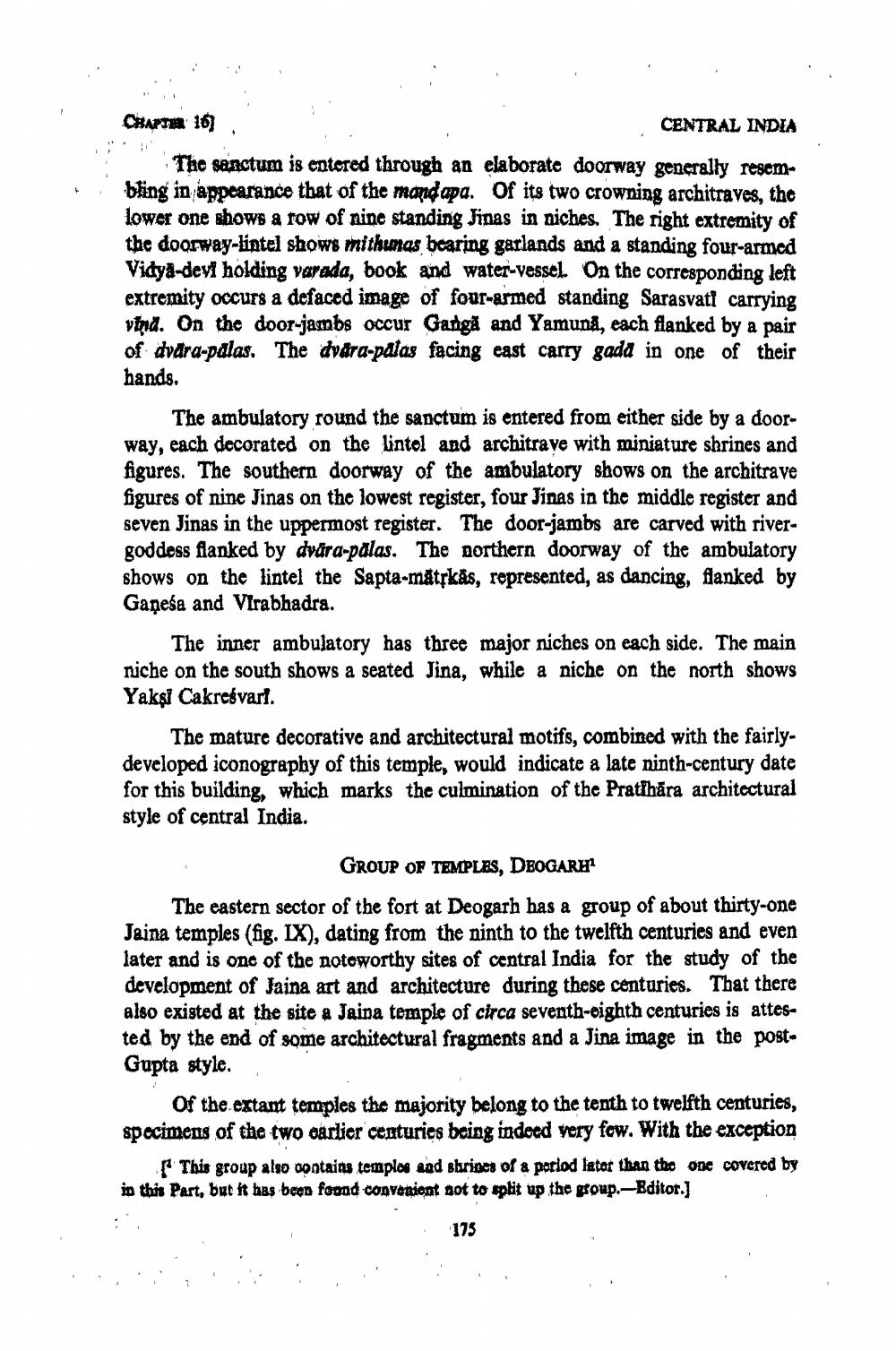________________
CHAPIR 101
CENTRAL INDIA The sanctum is entered through an elaborate doorway generally resembling in appearance that of the mandapa. Of its two crowning architraves, the lower one shows a row of nine standing Finas in niches. The right extremity of the doorway-lintel shows mithuas bearing garlands and a standing four-armed Vidyl-devi holding varada, book and water-vessel. On the corresponding left extremity occurs a defaced image of four-armed standing Sarasvati carrying vind. On the door-jambs occur Gangi and Yamuna, each flanked by a pair of dvdra-palas. The dvåra-palas facing east carry gada in one of their hands.
The ambulatory round the sanctum is entered from either side by a doorway, each decorated on the lintel and architrave with miniature shrines and figures. The southern doorway of the ambulatory shows on the architrave figures of nine Jinas on the lowest register, four Jinas in the middle register and seven Jinas in the uppermost register. The door-jambs are carved with rivergoddess flanked by dvåra-palas. The northern doorway of the ambulatory shows on the lintel the Sapta-matrkås, represented, as dancing, flanked by Ganeša and Virabhadra.
The inner ambulatory has three major niches on each side. The main niche on the south shows a seated Jina, while a niche on the north shows Yakşi Cakreśvart.
The mature decorative and architectural motifs, combined with the fairlydeveloped iconography of this temple, would indicate a late ninth-century date for this building, which marks the culmination of the Pratshāra architectural style of central India.
GROUP OF TEMPLES, DBOGARH
The eastern sector of the fort at Deogarh has a group of about thirty-one Jaina temples (fig. LX), dating from the ninth to the twelfth centuries and even later and is one of the notoworthy sites of central India for the study of the development of Jaina art and architecture during these centuries. That there also existed at the site a Jaina temple of circa seventh-eighth centuries is attested by the end of some architectural fragments and a Jina image in the postGupta style.
Of the extant temples the majority belong to the tenth to twelfth centuries, specimens of the two oarlier centuries being indeed very few. With the exception
This group also contains templos nad shrines of a period later than the one covered by in this Part, but it has been found convenient not to split up the group.-Bditor.]
175




